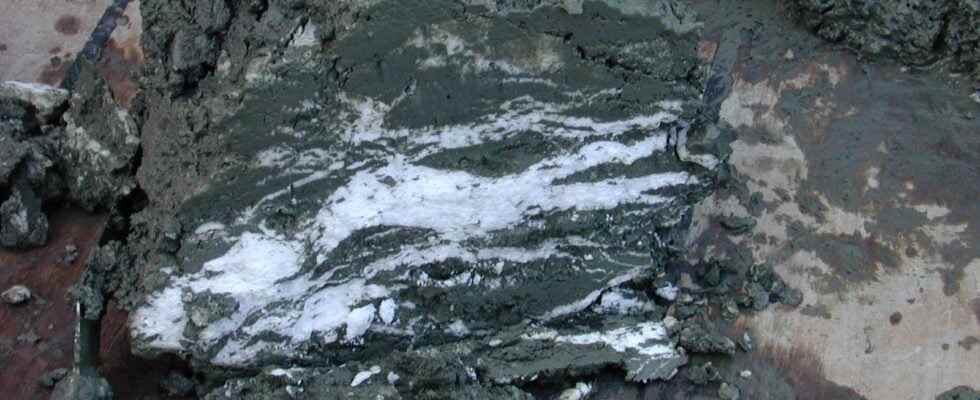In a context of global warming, the melting of methane hydrates is a major concern that could significantly impact the current evolution of the climate. Small presentation of these gas ices and their origin.
You will also be interested
[EN VIDÉO] Greenhouse gases: a new record in 2020 and after? According to the World Meteorological Organization (WMO), in 2020 the levels of greenhouse gases in our atmosphere reached a new record high. The annual rate of increase was higher than the average for the period 2011-2020. And the trend looks set to continue into 2021, continuing to fuel global warming that is causing more and more extreme weather events and other serious consequences for life on our Earth. To avoid the worst, we must now set carbon neutrality objectives. And hold them! © WMO
The hydrates of gasand in particular methane hydrates, are compounds solid resulting from the crystallization of a mixture of water and methane. From molecules gas are thus trapped in a network of water molecules that form a kind of cage. In nature, these gas hydrates are found in form of ice present in the sediment of the seabed and more particularly at the level of the continental shelves and slopes. They are also present in permafrost arctic areas.
Methane comes from the decomposition of organic matter
Methane hydrates are formed during the deposition of sediments and the decomposition of matter organic they contain. Indeed, continental margins are important places of sedimentary deposits loaded with organic matter. Under the action of bacteria anaerobes, this organic matter will gradually decompose and form methane in about two weeks. The methane molecules thus released will migrate to the surface through the sediments in the form of free gas (bubbles) or dissolved.
Under certain conditions of pressure and temperature, these molecules will combine with water molecules to form a stable solid: methane hydrates. The same process occurs in permafrost, even if the pressure conditions are very different. It is here the low temperature, below 0°C, which will maintain the hydrates in a stable form up to 1,000 meters deep. In the marine environment, the stability field of methane hydrates is for temperatures between 0 and 13°C and pressures between 30 and 110 bars.
A methane hydrate will therefore be in the form of ice for a temperature of 7°C if it is buried under 600 meters of sediment. But it will start to melt for a temperature increase of less than 1°C. In general, methane hydrates are mainly found in the first 500 meters of sediment deposited on the ocean floor.
By comparison, gas hydrates are stored in shallow reservoirs compared to deposits of natural gas conventional ones which are often located more than 2,000 meters deep.
The melting of methane hydrates: a major concern
When methane hydrates melt, they release 164 cm3 of gas per cm3 of ice. Their destabilization is therefore a critical element for the weatherknowing that methane is a strong greenhouse gas. In addition to the detrimental effect of releasing large amounts of methane into theatmospherethe melting gas hydrates can lead to other consequences, such as slope instability.
Indeed, the melting of this particular ice causes “holes” in the sedimentary pile deposited in the slope of the continental slope which becomes unstable. It would seem that, during the global warming that followed the last glaciationsthe melting of methane hydrates would have led to significant slippage ground submarinespotentially causing devastating tsunamis.
Interested in what you just read?
